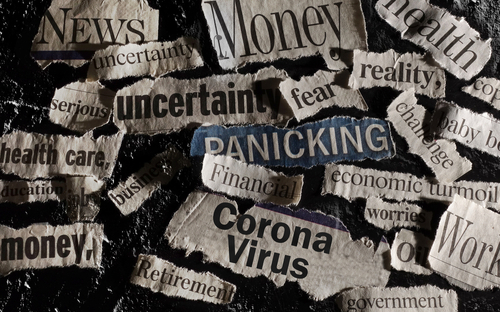 By Gideon Malherbe, VCI Founding Partner
By Gideon Malherbe, VCI Founding Partner
In our CV-19 Scenario Planning, we often talk about second order effects – the consequences that occur after the primary effect. For example, the initial practices of social distancing and business-constraining regulations had the consequences of airlines reaching a near standstill and sending their leased planes back to their lessors. Orders for new planes got canceled which forced aircraft manufacturers to turn to defense contracts to survive. But, defense budgets are expected to be cut because the feds spent a ton of money trying to soften the pandemic’s blow, including inter alia bailing out of the airlines. The airlines wisely decided they don’t need to fly, nor keep pilots employed, nor buy new planes.
Looking back to the beginning of CV-19 in January 2020, Scenario Planners recognized that the key “unknowns” were the magnitude of infections in each jurisdiction and the related healthcare system’s ability to cope with the influx of infected patients.
As data models matured and Chinese data was supplanted with U.S. data, the unknown variables for Scenario Planning shifted to our second set of Scenarios that questions the degree of government support and the length of lockdowns that various jurisdictions would enforce. Every lockdown technically meant bringing on a local economic standstill. Planners concluded 10 weeks of lockdown to be a critical threshold, and anything beyond the 10-week mark would cause irreparable harm to economies.
Our third set of Scenarios contemplates human behavior post-COVID. Aspects like the maneuvers of organized labor, the level of fear among the general workforce to return to work, and how the pent-up emotions of the population would manifest as jurisdictions open up, are some of the discussions.
One Scenario with our third set explores “pent-up demand” and combines it with massive government economic support. The result is a potential “V” curve of rapid economic recovery. In this Scenario, people burst out of their homes and visit all kinds of shopping and entertainment venues en masse – with related spending. Second order consequences would include higher credit card defaults, substantial reduction in unemployment figures and lots of acting out.
Then on Monday, May 25th, George Floyd was killed in police custody. This triggered worldwide protests. Without in the least reducing the principles of the matter, contributing factors to this global response included the fact that everyone was at home and witnessed the event in “real time,” and we had pent-up emotions to get out and take action.
The insight here is that as we plan for a post CV-19 world, and as we map the possible unfolding events, it is very necessary to not stay on a single-dimensional storyline, but to spend the necessary time thinking about the second order effects of the major issues. For each of these, we need to again imagine connections to possible future stories that are creative, sporadic and always a bit reaching.
We use Scenario Planning as a technique to better see the future. We know the weakest link in this process is a lack of courage to step outside of “what we know-we know” and push the envelope to craft futures that, without Scenario Planning, may have remained unthinkable. It is only in these spaces that we find the abundance of ideas and options, and the ability to eloquently create strategies that will shape the future of our world, hopefully very much better than the present continuous tragedies.
Get in touch
Call or text +1 914 381 0000
or email gideon.malherbe@govci.com
June 8, 2020
Categories:Scenario Planning, Strategic Planning, Uncategorized, VCI, Virtual Consulting
0 Likes




